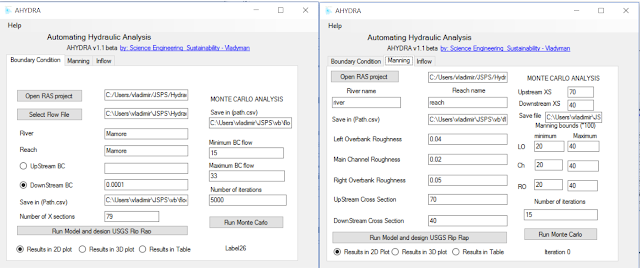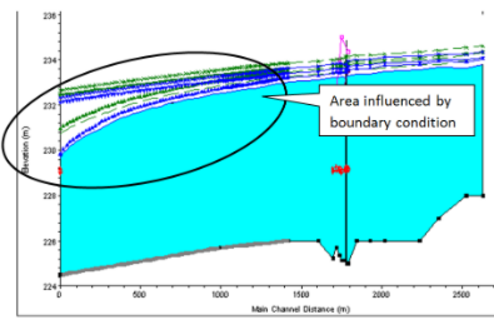Automating HEC-RAS tool
Some years ago, (early 2010) I found a way to break
the RAS code and to automate some features of HEC-RAS. Thus, I was able to
perform sequential modelling HEC-HMSàHEC-RASàSobek1D2D and to perform uncertainty analysis within
cloud (Moya Quiroga et al., 2013). At that time there was no literature about
the RAS code, so I had to try several options in the Controller class and find
out how they work. In October 2015, “breaking the RAS code” was published
(Goodwell, C. 2015) and I hurried into getting my copy (I was among the first
ones, so it included a 4 colour pen).
Fig 1. HEC-RAS in sequential modelling (Source: Moya Quiroga et al., 2013)
Documentation in the book
gave me important tips and I was able to develop several scripts for automating
many pre-processing and post-processing tasks; not only updating parameters but
also modifying geometry and post-processing results.
HEC-RAS used to be a great tool, but now it became wonderful. However, all my scripts work under the console (no graphical user interface GUI). I developed them and I know how to use them. Thus, I decided to include a user interface in order to make more universal tools. Few years ago I released the first version with a graphic user interface GUI (AHYDRA), a tool for automating hydraulic analysis. Debugging and coding takes time, so I released and didn’t improve it. Few months ago I decided to update it and to release new improved version was released. This version includes new features and some bugs were fixed.
HEC-RAS used to be a great tool, but now it became wonderful. However, all my scripts work under the console (no graphical user interface GUI). I developed them and I know how to use them. Thus, I decided to include a user interface in order to make more universal tools. Few years ago I released the first version with a graphic user interface GUI (AHYDRA), a tool for automating hydraulic analysis. Debugging and coding takes time, so I released and didn’t improve it. Few months ago I decided to update it and to release new improved version was released. This version includes new features and some bugs were fixed.
New automatization options for HEC-RAS
The first application that I got for this tool was to improve the boundary conditions in HEC-RAS. This new version automatically
updates data and simulates HEC-RAS considering:
· Downstream boundary conditions (energy slope). Important for
analysing the extent of the uncertainties due to BC and to select the best BC
for our case.
· Manning roughness. Important to analyse the range of potential
manning roughness. Besides, it allows analysing a spatial variable Manning. For
instance, the Manning range is between 0.03-0.04; we can simulate one cross
section with 0.03, the next cross section with 0.034 and so on. Thus, we will
be able to perform an uncertainty analysis of manning.
· Upstream discharge boundary condition. Inflow is usually assumed
as a fixed value. However, most inflow discharge data are based on steady state
stage-discharge curves prone to errors. Thus, we can perform a sensitivity or
uncertainty analysis of the inflow.
Fig 2. User interface of AHYDRA
Single and multiple simulations (Monte Carlo).
- The single simulations option (at the left of the GUI) allows to automate one simulation by changing one value of the mentioned possibilities.
- Besides, this version includes the possibility to perform a Mont Carlo analysis by running several simulations and randomly updating the desired parameter within a user specified range. This option is located on the right side of the GUI.
Rip rap design
The single simulation
option also calculates the rip rap size (d50 in SI units) for each cross
section, by considering the simulated hydraulic conditions and the USGS rip rap
design criterion.
Installaing AHYDRA to automate HEC-RAS
This version includes an installer *.exe. Just
double click it and follow the install wizard. After installation AHYDRA will
be accessible via desktop and start up menu.
For the free AHYDRA installer fill this form (click here), or scan the QR code.
Scan the QR code with your tablet/smartphone to fill the free AHYDRA request form.

















4 comments
Hola Vladimir, me gusta mucho tu programa y me interesaría saber en que lenguaje lo desarrollaste.
Saludos desde Ecuador
Hola
Esta en VB.Net
Very good Initiative and knowledgeable post.Could you give some idea regarding the setting of roughness for un-gauged rivers using the available gauge information.
Hi Viladmir,
This is really wondeful. Nice Job!! You really did help for those working with HECRAS. I want to ask you if this exe could be used for 2D Modelling
Post a Comment